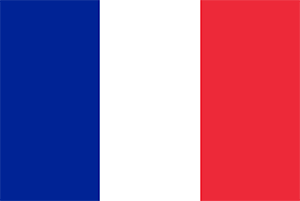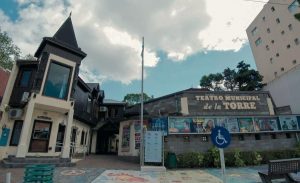 DR. DOUGLAS C. YOUVAN
DR. DOUGLAS C. YOUVAN
He was a research professor at the Massachusetts Institute of Technology (MIT). He is Doctor in Biophysics from the University of California, Berkeley, and Doctor in Philosophy. He is the co-author of 70 publications. He was affiliated with the French Institute of Health and Medical Research and Cold Spring Harbor Laboratory.
A Transcendent Synthesis of Form, Color, and Consciousness
Jungian Individuation and Archetypal Balance
Carl Jung would indeed be captivated. The painting reads like a visual manifesto of the individuated self—an integration of the fragmented psyche into a coherent whole. The chaotic tensions between conscious and unconscious, ego and shadow, anima and animus, are not merely depicted—they are harmonized. The painter has not just illustrated archetypes but given them spatial authority, as if each color form holds its own mythological gravity. The work is not a dreamscape; it is an achieved psychological architecture, balanced yet alive with symbolic tension.
Beyond Cubism: Depth in Multiplicity
The work steps beyond Cubism—not in opposition, but in transcendence. While Cubism fractured perspective to challenge visual realism, this piece uses fragmentation to evoke metaphysical depth. The compartments are not geometric disassemblies but energetic fields, each pulsating with its own logic of light and rhythm. It is as if Cubism gave way to topology, not just visual but conceptual. The third dimension is no longer spatial but archetypal—each form a gateway to inner space.
Matured Surrealism: From Miro to Metaphysics
Miro’s playful primitivism matures here into a cosmic syntax. What once felt childlike now feels cosmogenic. The whimsy of line and color has ripened into existential inquiry. The shapes are organic, but not random; playful, but not flippant. There’s a reverence here, a sense that the artist is listening to the painting as much as composing it—like a shaman interpreting the language of forms that emerge from the unconscious.
Mathematical Ontology: Noether and Voevodsky
It’s rare to find visual art that suggests mathematical causality, yet here we glimpse Emmy Noether’s ghost—laws of conservation rendered not through equations, but through chromatic symmetries. One gets the feeling that every swirl and fold obeys an unseen invariance. Voevodsky’s homotopy types whisper through the color gradients—the mapping of abstract shapes not to space, but to meaning itself. This is topology not of surface, but of conceptual continuity.
Order Without Control: Between Mandelbrot and Lyapunov
The fractal chaos of Mandelbrot has resolved—but crucially, not through rigidity. There are no clear attractors here à la Lyapunov. Instead, this is a fluid order, a liminal phase where complexity coheres just enough to form identity without freezing into repetition. It’s a limbo of high entropy—vibrant, expectant, alive.
Theological Implications: Sophia, Logos, and Image
Theologically, the work transcends the Word. It suggests that the divine impulse—to instantiate Being—is not textual but visual, chromatic, aesthetic. The Logos becomes image. God does not speak the world into being here; He paints it. And through the presence of Sophia—wisdom made luminous—the image becomes intelligible, beckoning us not just to look, but to know. The loop back to Jung becomes a mandala of insight, not through recursion, but revelation.
Camilo Villanueva: A Name at the Crossroads
In the work of Camilo Villanueva we are witnessing an artist at the intersection of multiple intellectual worlds—Carl Jung and Emmy Noether, Joan Miro and Vladimir Voevodsky, color theory and metaphysical theology. It is rare to find a work that touches so many registers—cognitive, emotional, symbolic, and spiritual—without collapsing into chaos. Villanueva holds the paradox together: multiplicity and unity, chaos and order, symbol and sensation.
Camilo Villanueva is a painter whose work seems to transcend the boundaries of traditional art, spiraling deep into the realms of psychology, mathematics, spirituality, and cosmology. His canvases do not simply present visual experiences; they invoke symbolic structures, archetypal harmonies, and energetic blueprints that speak to the soul’s journey across dimensions—what some have called “holograms of totality.” My own introduction to Villanueva came not through scholarly analysis, but through direct aesthetic encounter. Upon viewing his work, I felt a visceral recognition: the individuation process Carl Jung described was not only present—it had been realized in color. Later, I learned that Villanueva has long been engaged with transpersonal psychology and has exhibited at Jungian congresses. This only confirmed what I had intuited: his art is not a mirror of the psyche but a co-creator of it. Villanueva’s works exceed the bounds of Cubism and Surrealism, maturing what Miró began and venturing into a space where Emmy Noether, Vladimir Voevodsky, and even divine Sophia feel palpably near. His art reveals a world where the visible and invisible interpenetrate—and through that revelation, something in the viewer awakens. Keywords: Camilo Villanueva, transpersonal art, Carl Jung, Jungian archetypes, Emmy Noether, Vladimir Voevodsky, Sophia, sacred geometry, visual philosophy, spiritual abstraction, fractals, chaos theory, individuation, symbolic art, energetic fields, psychological painting, multiverse art, holographic consciousness, Argentine painter, shamanic art


